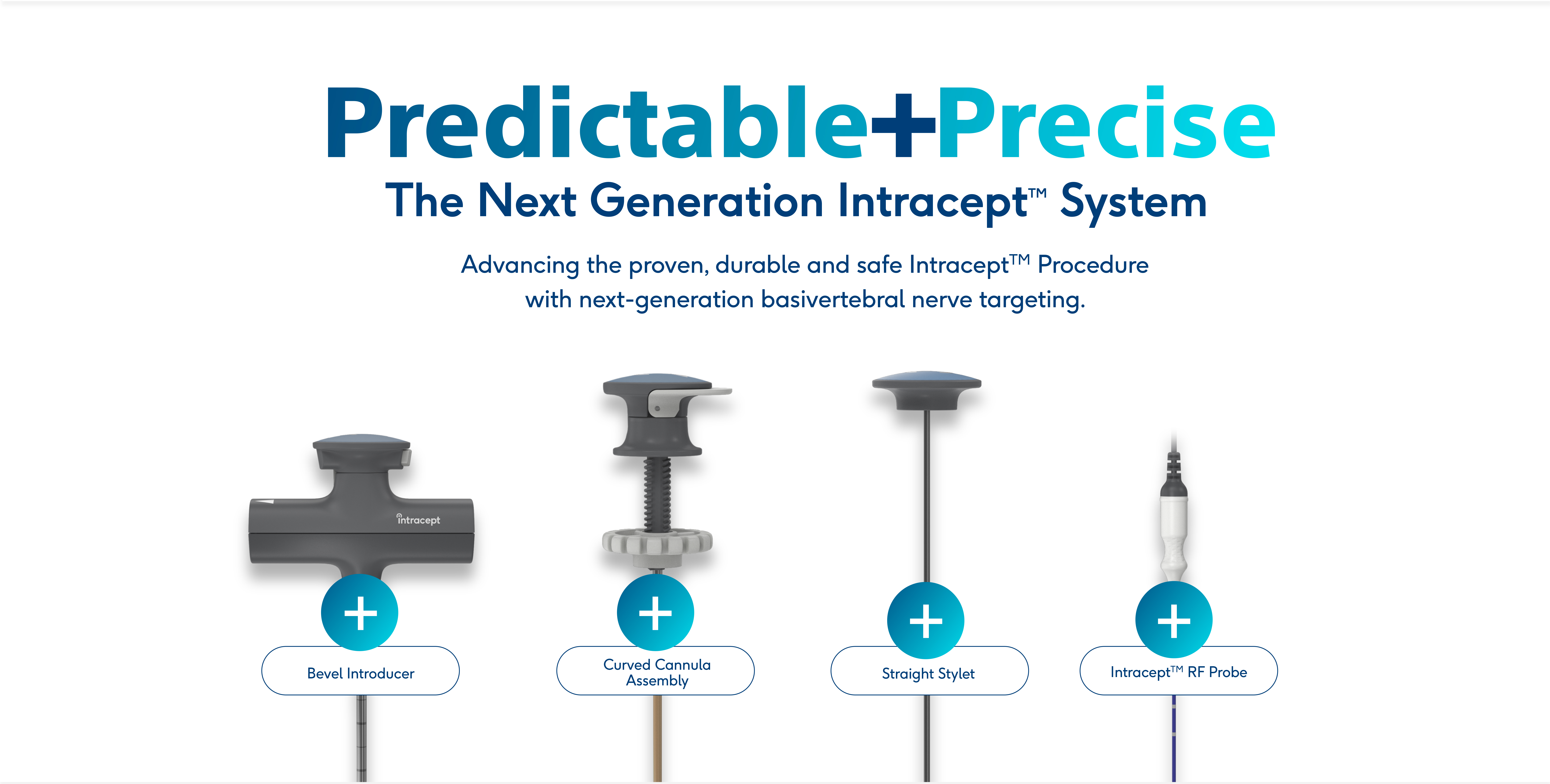

Getting Back What Pain Has Stolen.
That’s Living Proof.
Meet the Intracept™ Procedure
Chronic low back pain steals so much of life. Now there’s a way to get back to living. The Intracept Procedure: the outpatient procedure for proven relief of chronic vertebrogenic low back pain.
The Only Procedure Designed to Relieve Vertebrogenic Pain
That spontaneous road trip, that special hug, that long-lost workout routine: let’s bring these moments back. The Intracept Procedure is the only procedure specifically designed to target the basivertebral nerve for the relief of chronic vertebrogenic low back pain—letting people lean into life again. That’s living proof.
Vertebrogenic Pain is a Common Source of CLBP
Many patients with CLBP do not know where their pain is coming from: They just know they hurt and haven’t found an answer. Research over the past 30 years has shown that, for many of these patients, their pain is caused by damage to vertebral endplates, the interface between the disc and the vertebral body. This low back pain is vertebrogenic pain—and we’re leading the way to diagnose and treat this condition.
The Intracept™ System:
Now with Next-Generation Access Instruments

The proven, durable and safe Intracept™ Procedure now features next-generation Intracept Access Instruments for predictable and precise targeting of the basivertebral nerve.
Looking for Proof?
Hear from the Ones Living It.
Real Intracept Procedure patients tell their stories of lasting relief from vertebrogenic pain.
As with any surgical procedure, there are risks and considerations associated with the Intracept Procedure. See important safety information below.
Physicians: See Indications, Contraindications, and Risks
Indications for Use: The Intracept™ Intraosseous Nerve Ablation System is intended to be used in conjunction with radiofrequency (RF) generators for the ablation of basivertebral nerves of the L3 through S1 vertebrae for the relief of chronic low back pain of at least six months duration that has not responded to at least six months of conservative care, and is also accompanied by features consistent with Type 1 or Type 2 Modic changes on an MRI such as inflammation, edema, vertebral endplate changes, disruption and fissuring of the endplate, vascularized fibrous tissues within the adjacent marrow, hypointensive signals (Type 1 Modic change), and changes to the vertebral body marrow including replacement of normal bone marrow by fat, and hyperintensive signals (Type 2 Modic change). Contraindications - Use of the Intracept Intraosseous Nerve Ablation System is contraindicated in: Patients with severe cardiac or pulmonary compromise, patients with active implantable pulse generators (e.g. pacemakers, defibrillators), patients where the targeted ablation zone is < 10 mm away from a sensitive structure not intended to be ablated, including the vertebral foramen (spinal canal), patients with active systemic infection or local infection in the area to be treated, patients who are pregnant, and/or skeletally immature patients (generally ≤ 18 years of age). Refer to the Instructions for Use provided with the Intracept Procedure or www.relievant.com/intracept/ for potential adverse effects, warnings, and precautions prior to using this product.
Caution: U.S. Federal law restricts this device to sale by or on the order of a physician.
Copyright © 2025 by Boston Scientific Corporation or its affiliates. All rights reserved.
Patients: See the Indications & Risks Involved
Contraindications include being pregnant, having weakened cardiac or pulmonary function, having an active implanted electronic medical device in the body (such as a pacemaker or defibrillator), being diagnosed with a systemic or local infection, or having an anatomy that could be damaged unintentionally while ablating the basivertebral nerve (based on your physicians’ clinical review). The Intracept Procedure is also contraindicated in patients who are skeletally immature – which generally means individuals under the age of 18 are not candidates. There are also certain risks and precautions regarding the procedure which you should be aware of before proceeding. Talk with your doctor about what indicates, and contraindicates, certain patients for the Intracept Procedure – as well as the risks and precautions for the procedure. For complete indications for use, contraindications, warnings, precautions, and side effects visit www.relievant.com/intracept/.
Caution: U.S. Federal law restricts this device to sale by or on the order of a physician.
Copyright © 2025 by Boston Scientific Corporation or its affiliates. All rights reserved.






